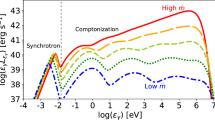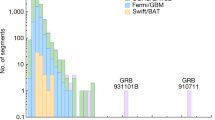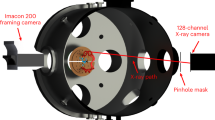Abstract
SUPERNOVAE, the violent collapses of massive stars into neutron stars, are considered to be the strongest known sources of gravitational radiation. The quadrupole (and higher) moments of the hydrodynamic motions of the infalling matter generate the radiation. A burst of neutrinos of total energy ∼0.1 M⊙c2 and of duration between ∼10−3 and 1 s is thought to accompany the collapse1. If this burst has nonspherical angular distribution, it will generate additional gravitational radiation— possibly comparable in magnitude to that caused by the collapse. That the neutrino burst might produce gravitational waves had been overlooked until recently, when Epstein suggested the idea2. This problem is of interest in its own right because a massless field is acting as the source of a radiation field. In electromagnetism there are no charged, massless particles; in fact, the existence of such a particle would lead to infrared divergences3. The gravitational effects of neutrinos have been studied previously2,4–6, but the approach we report here is new and has a nice analogue in electromagnetism. The emission of a neutrino is a quantum process and so we use the zero frequency limit (ZFL) quantum technique of Weinberg3 to obtain a classical source which gives correct results in this limit. Because the time scale of the burst (∼10−3–1 s) is much longer than that of the neutrino emission process (∼10−22 s) only the ZFL is needed in the calculation. The ZFL technique has been used in an analogous way in electromagnetism to calculate the electromagnetic radiation accompanying β-decay or electron capture7. Smarr has applied the ZFL method to the gravitational bremsstrahlung process8.
This is a preview of subscription content, access via your institution
Access options
Subscribe to this journal
Receive 51 print issues and online access
$199.00 per year
only $3.90 per issue
Buy this article
- Purchase on Springer Link
- Instant access to full article PDF
Prices may be subject to local taxes which are calculated during checkout
Similar content being viewed by others
References
Schramm, D. Enrico Fermi Institute Preprint No. 76–64 (1976).
Epstein, R. The Generation of Gravitational Radiation by Escaping Supernova Neutrinos (MIT Preprint, 1978).
Weinberg, S. Phys. Rev. 140, B516–524 (1965); Gravitation and Cosmology 260–266 (Wiley, New York, 1972).
Vadiya, P. C. Nature 171, 260–261 (1953).
Linquist, R. W., Schwartz, R. A. & Misner, C. W. Phys. Rev. 137, B1364–B1368 (1965).
Westervelt, P. F. Acta phys. pol. 27, 831–841 (1965).
Jackson, J. D. Classical Electrodynamics 725–727 (Wiley, New York, 1975).
Smarr, L. Phys. Rev. D15, 2069–2077 (1977).
Author information
Authors and Affiliations
Rights and permissions
About this article
Cite this article
TURNER, M. Gravitational radiation from supernova neutrino bursts. Nature 274, 565–566 (1978). https://doi.org/10.1038/274565a0
Received:
Accepted:
Issue Date:
DOI: https://doi.org/10.1038/274565a0
This article is cited by
-
A gravitational non-radiative memory effect
General Relativity and Gravitation (2021)
-
The Λ-BMS4 charge algebra
Journal of High Energy Physics (2020)
-
The Poincaré and BMS flux-balance laws with application to binary systems
Journal of High Energy Physics (2020)
Comments
By submitting a comment you agree to abide by our Terms and Community Guidelines. If you find something abusive or that does not comply with our terms or guidelines please flag it as inappropriate.



